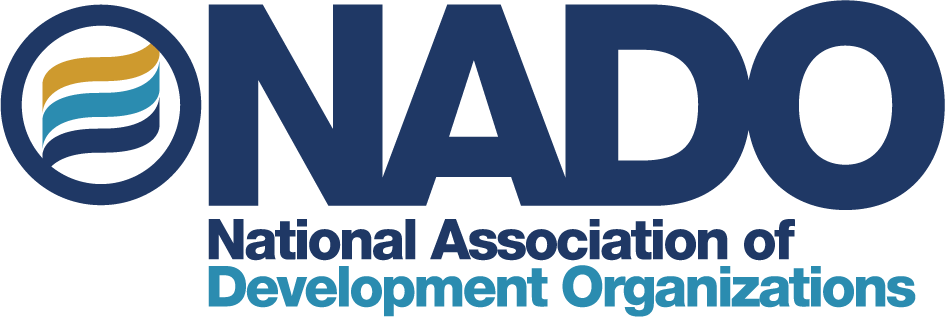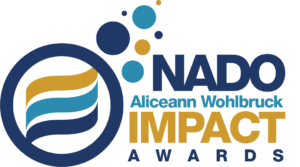
Though the word ‘mariculture’ may not be a common term for many people, especially those living inland, it has come to signify an emerging industry that presents a tremendous opportunity for coastal regional economies. It is a specialized branch of aquaculture involving the cultivation of marine organisms in the ocean for food and other products. Think farming, but in the ocean; mariculture operations cultivate and harvest regular batches of shellfish like oysters, mussels, abalone, or geoducks (pronounced “gooeyducks”), as well as seaweeds, like kelp. Mariculture of shellfish and seaweeds do not require feed, fertilizers, insecticides, herbicides, antibiotics, or practically any inputs at all, making the practice very sustainable and quite inexpensive to operate. Mariculture offers such promising economic and environmental benefits that various organizations in the state of Alaska have been working together with government offices towards the goal of growing this sector into a $100 million industry in 20 years. These efforts are generating a lot of buzz and have also become one of the centerpieces of Southeast Alaska’s Comprehensive Economic Development Strategy (CEDS), bringing together a mix of partners to transform the regional economy and create new opportunities for residents, businesses, and communities.
Laying the Foundation for the Mariculture Industry
The Alaska Fisheries Development Foundation (AFDF) began seriously looking into the possibilities for mariculture in 2013. Opportunities for its expansion were consistently raised as part of its strategic planning sessions, leading staff to begin asking: Where is the support for mariculture in Alaska? What current regulations are in place for aqua- and mariculture? Where can we start to grow a state-wide initiative? As a result of these inquiries, in 2014 the AFDF received a grant from the National Oceanic and Atmospheric Administration (NOAA) for the Alaska Mariculture Initiative – an effort to accelerate the development of mariculture in Alaska. Two years later, Alaska Governor Bill Walker established the Alaska Mariculture Task Force, which included AFDF and other key stakeholders.
Around the same time, Southeast Conference, which serves as the economic development district for southeast Alaska, was going through a rigorous research and planning process for its 2016-2020 CEDS. The broader seafood industry had long been seen as a top opportunity for the region, and mariculture was officially identified as a priority objective for seafood development in the Southeast Conference’s CEDS. The document specifically mentions supporting the Governor’s Task Force, as well as increasing the number of mariculture operations and improving the production of existing operations. Southeast Conference staff and leadership recognized that mariculture leveraged many of the strengths and resources that the region already had available. It also brought new opportunities for jobs, income, and stable economic growth to coastal communities. One of the most important priorities that the Southeast Conference identified was to remove obstacles such as leasing requirements and coastal regulations that were causing tremendous barriers to entry into the new market.

Over the next two years, AFDF and the Task Force collaborated with a variety of stakeholders: seafood and maritime industry leaders, state offices such as the Alaska Department of Fish and Game, federal agencies like NOAA, Alaskan tribal groups, and the University of Alaska. They also worked closely with regional organizations, such as the Southeast Conference and the Southwest Alaska Municipal Conference (SWAMC). The Task Force wanted the planning process to be integrated with up-to-date economic analysis and to be informed by real data, not just projections. Echoing Southeast Conference’s calls to address barriers to entry, the Task Force worked with various state departments to change legislation on renewing licenses, marketing seafood products, and other obstacles. The Task Force also worked directly with the Governor’s administration to make regulatory changes that would encourage more and larger mariculture operations across the state. Members of the Task Force engaged in numerous interviews with local press to raise awareness and advocate for the Initiative; they also offered public presentations to circulate information and connect with local Alaskans. The Task Force secured approval from a variety of federal and private funding agencies to open funds for mariculture loans and research grants and also approached environmental and tribal groups early on to gain their critically important support and planning input.
Planning for the Future
In 2018, the Task Force presented Governor Walker with the Alaska Mariculture Development Plan, an 82-page document detailing the results of the two-year iterative comprehensive planning process. The Plan lays out the vision of growing a $100 million mariculture industry in 20 years and then outlines a comprehensive plan for achieving that vision, including recommendations such as “Align Laws, Regulations, and Agency Practices with Stakeholder Needs,” “Promote Success through Alaska Native Participation,” and “Develop New Mariculture Markets and Products.” The Plan was complemented by a set of case studies, a separate economic framework for mariculture in Alaska, and a summary briefing document. In response, Governor Walker signed another Administrative Order in 2018 extending the Task Force for another three years to research further recommendations, to serve as an advisory panel to the Governor, and to further support the development of mariculture in Alaska. As the Task Force approaches its May 2021 expiration date, its members are working to establish a more permanent body that will continue to encourage and support the development of mariculture in the state.

Meanwhile, Southeast Conference and other regional partners are working to incorporate the Alaska Mariculture Development Plan into the latest CEDS plan. In the process of drafting the 2020-2025 CEDS, Southeast Conference underwent another comprehensive SWOT analysis and identified mariculture as a top priority for overall development of their entire region, not just a priority for developing the seafood sector. Mariculture is now seen as a symbol of regional resilience and strength: one individual or group works hard to make a living, and along the way unites people together to grow a community and lift up the entire region. In fact, four Southeast Conference Board members have started their own mariculture businesses, truly ‘putting their money where their mouth is.’
Launching New Businesses and Building Value Chains
Due in large part to the efforts of the Governor’s Task Force, AFDF, and regional organizations like the Southeast Conference, the mariculture industry in Alaska is seeing unprecedented growth. The Task Force reports that sixty applications for new mariculture operations have been filed over four years, including applications for what will hopefully be the largest mariculture setups in the entire state, and potentially in North America. The applications have come from all over Alaska, including remote Adak at the very tip of the string of islands extending southwest from the mainland; some of these have already been approved and have started their operations. One cooperative in the Prince William Sound region, currently composed of nine small farms, is working to grow to twenty-five farms and also plans to expand into product development, using its own harvests to make and sell consumable goods.
Another example of a successful mariculture startup is Premium Aquatics LLC, the brainchild of Markos Scheer, who served as a board member for the AFDF and currently serves as the VP of Southeast Conference. Markos’s first project under Premium Aquatics is a kelp production operation called Seagrove Kelp Company, which consists of a nursery for raising “baby kelp” and a 100-acre kelp farm in the coastal waters around Prince of Wales Island, in Southern Southeast Alaska. The Seagrove mariculture permit also includes about 25 acres for oyster production, which Scheer plans to begin soon. To begin operations, Seagrove was able to hire local fisherman, as many of the skills were easily transferable between fishing and kelp farming. The company completed its first full season of kelp production in June 2020; as such, Seagrove has already proven to be operationally viable, and so the only real challenges to the growth and success of the company are market development and capital acquisitions. Scheer sees mariculture as a “foundational industry” that can dramatically change the region for the better.

Many new products are also being developed and successfully marketed from mariculture harvests. For example, Barnacle Foods is a new business in Juneau that sells kelp salsas and kelp pickles, among other exciting and experimental kelp-based foods. When they started four years ago, owners Matt Kern and Lia Heifetz were making kelp pickles and salsas in their home kitchen for themselves, friends, and family; the wild kelp they used in their homemade foods was pulled from the ocean by their own hands. Now, they operate a business out of a commercial kitchen, with kelp sourced from successful mariculture operations. Barnacle Foods is getting rave reviews and demand is growing fast. Their business is an essential part of developing a successful mariculture industry for Alaska as it keeps the value chain local and builds wealth in local communities. Kern and Heifetz have ambitions to become a major kelp processor for the state of Alaska, further securing the value-added within their community and reducing the exports of raw materials to be processed elsewhere. They view the future of mariculture and its products with great optimism, especially in the light of such unexpected global conditions which have highlighted the need for stable, domestic food sources.
The various initiatives and projects centered on developing the Alaskan mariculture industry all emerged from planning processes that identified an opportunity to not only create jobs and income, but also to create a sustainable industry from the ground up that roots wealth locally. The Alaska Mariculture Task Force’s work on this issue and mariculture’s prominent placement in the region’s CEDS have established a framework and solidified partnerships to help build on local strengths, eliminate barriers, and create the space for the industry to grow. For the communities and people of Alaska, mariculture is an opportunity to improve or preserve their jobs and incomes and promote sustainability. At the same time, it has also enhanced cultural identity, environmental responsibility, health and nutrition, economic diversity, and much more for communities across the state.
Researched and written by Austin Barrington, NADO Research Foundation Graduate Fellow
Special thanks to the following individuals for sharing their ideas and insights during interviews in preparation for this case study: Meilani Schijvens, Southeast Conference; Julie Decker, Alaska Fisheries Development Foundation; Markos Scheer, Seagrove Kelp Co.; and Lia Heifetz, Barancle Foods.
![]()
This case study was developed as part of the NADO Research Foundation’s Stronger CEDS, Stronger Regions program, funded through a grant from the U.S. Economic Development Administration,U.S. Department of Commerce. The statements, findings, conclusions, and recommendations are those of the author(s) and do not necessarily reflect the views of the U.S. Economic Development Administration or the U.S. Department of Commerce.



